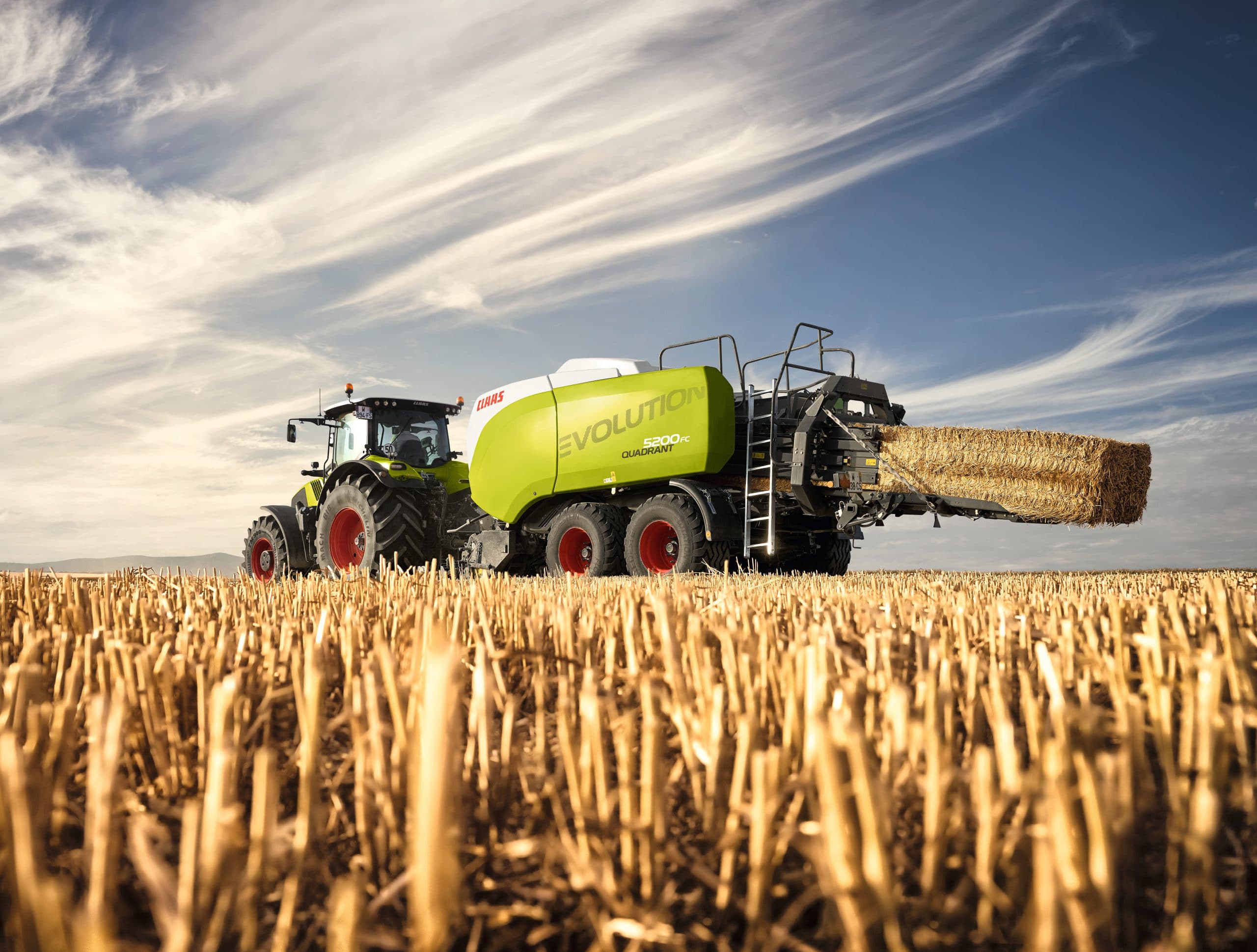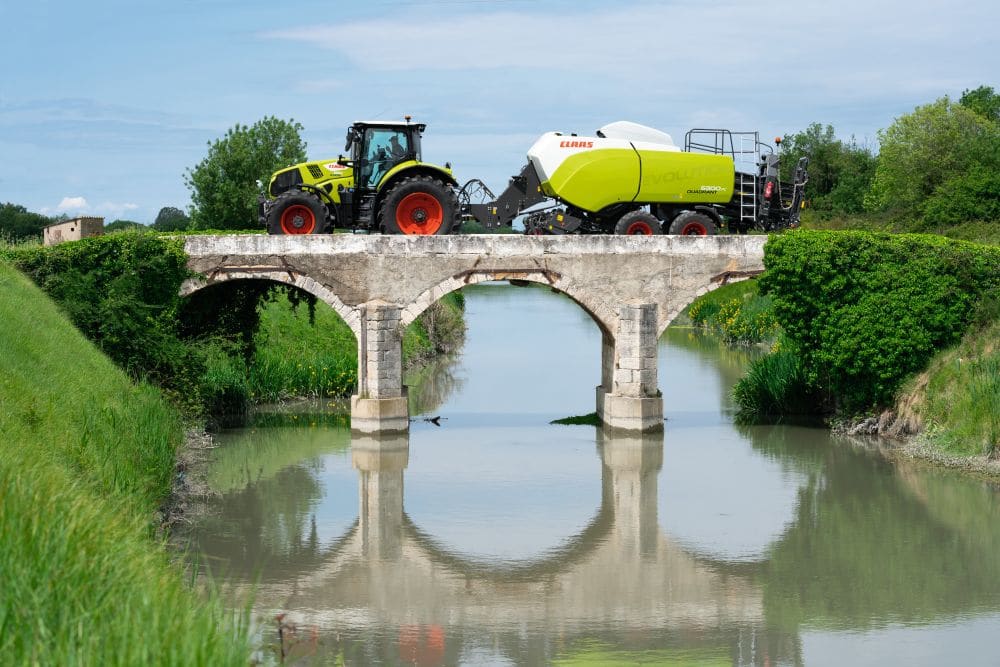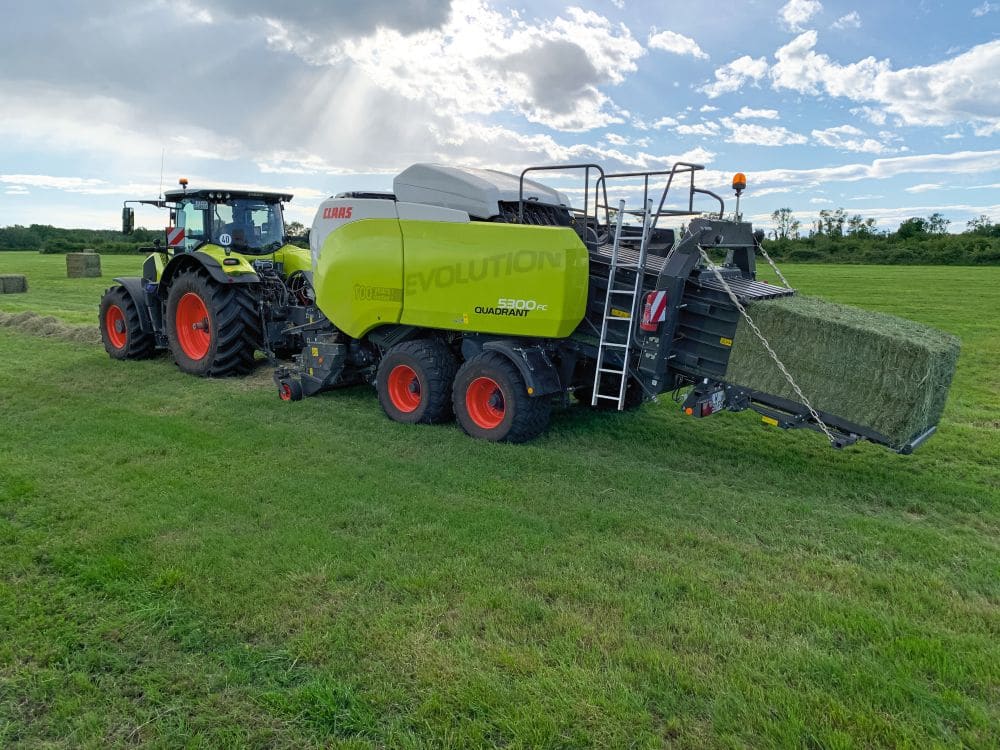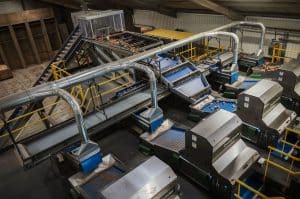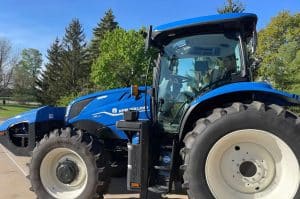Claas has re-engineered its “Quadrant” square balers for increased output and maximum durability. Among other things, the new Quadrant now has a new HD pick-up.
Highlight of the “Quadrant Evolution” is the new HD pick-up with two cam tracks. This guarantees maximum torsional resistance and robustness. Furthermore, wear costs have been reduced by increasing the use of resilient components borrowed from the Claas Jaguar pick-up and by reworking and strengthening bearings, intake panels and other parts.
The mechanically driven pick-up with five rows of tines and 18 double tines per row has also been tweaked to increase throughput and further improve raking quality. The extra row of tines allows the pick-up to rotate more slowly, while the speed of the “Power Feeding System” (PFS) roller has been increased. The feed roller has also been given extra paddles which can be removed when harvesting long-stalked crops. The spring-mounted PFS feed roller compensates for uneven swaths. The overall objective of the innovations is to enhance raking performance and throughput while ensuring gentle, loss-free crop pick-up. To handle higher throughput volumes, the release torque on the friction clutch has been increased to 1,600 Nm and the diameter of the pick-up main drive shaft has been enlarged. Semiautomatic chain tensioning ensures reliable pick-up drive and automatic lubrication and a 6.3 l oil reservoir is available as standard.
Optimised bale chamber
The bale chamber has also undergone performance-enhancing modifications. The top section incorporating the header plate and side panels has been redesigned and strengthened to produce an even better bale shape and slightly higher bale density. Furthermore, factory-fitted side knives and deflectors are available to reduce material build-up in the ram guide area when baling straw, maize or sugarcane – further increasing operational safety and reducing the cleaning effort.
The automatic baling pressure control (APC) responds even more rapidly – and even more sensitively – to twine tension or load in the intake area.
The use of additional Hardox HD components (some standard and others optional) – such as HD bearings for the ram guide with up to four times the service life – has further reduced wear in the bale chamber, knotter area and intake. Thanks to these extremely robust and durable components combined with the massive pick-up with cam track on both sides and the simplified maintenance, the TCO (total cost of ownership) of the Quadrant has been reduced.
Improved hitching and handling
The “Quadrant 5300 Evolution” has a completely new front frame and headstock, while the 5200 and 4200 models only have a new hitch frame. This provides additional hitching positions for drawbar eyes or K80. The hydraulic stand of the new Quadrant Evolution is double-acting, longer than the previous generation and built into the hitch frame. Standard “Kennfix” quick-release couplers make it easy to connect the hydraulic lines.
Modifications to the twine boxes have also made life easier for the operator. The twine guide swings out and can be locked in position. This means that the twine can be threaded when standing beside machine without having to use a stepladder. The twine brakes can be adjusted from the same standing position without needing tools. This saves time and increases workplace safety. A 10 l hand-washing tank is provided as standard for the driver to use after completing any adjustments.
There’s a new optional function that is sure to go down well with drivers too: the bale ramp can be opened and closed hydraulically from the comfort of the cab, so no need to step down. This function also enables the final bale to be ejected from the driver’s seat, again eliminating the need to step down from the cab and actuate the lever beside the bale chamber.
Simplified terminal operation
Changes have been made to the electronic control panel of the Quadrant Evolution, which is accessed via CEMIS 700, CEBIS or any other ISOBUS-compatible terminal. Just two working menus and three settings menus provide a better overview and rapid navigation. In auto mode the machine capacity utilisation is displayed based on average bale weight and baling pressure. In addition, the driver can now monitor the oil temperatures and oil levels in the terminal at all times. Thanks to an optional PROFI CAM 4 camera – with additional display on request – the driver can also keep an eye on working areas such as the knotters, the bale chute or the entire area behind the tractor-baler combination when reversing. Comfort and safety have been enhanced in equal measure.

![RightSpot Ad Template Digital-1400×190-px[76] Ag Leader RightSpot](https://world-agritech.com/wp-content/uploads/elementor/thumbs/RightSpot-Ad-Template-Digital-1400x190-px76-r316mmc0hgoob9qxmklllnnbxta1nlj7t2vjkoyeek.png)

